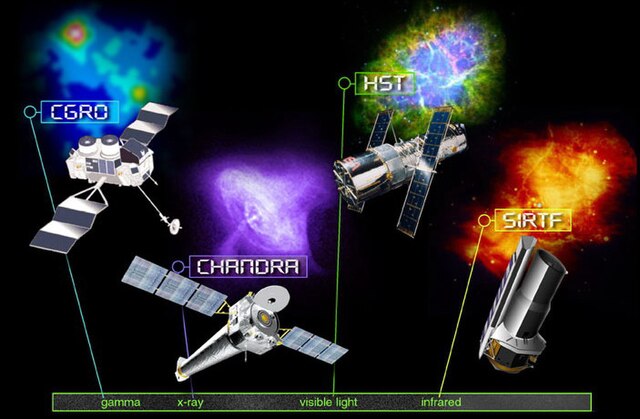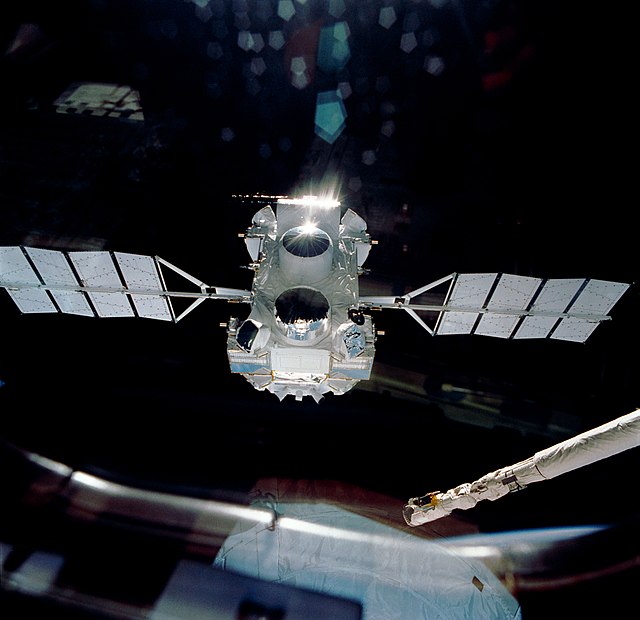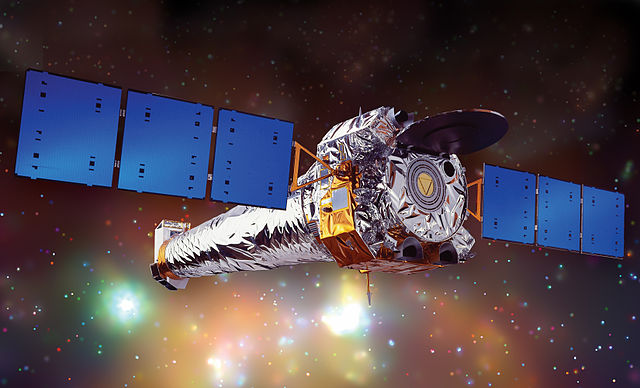Great Observatories program
NASA's series of Great Observatories satellites are four large, powerful space-based astronomical telescopes launched between 1990 and 2003. They were built with different technology to examine specific wavelength/energy regions of the electromagnetic spectrum: gamma rays, X-rays, visible and ultraviolet light, and infrared light.
Four Great Observatories
Hubble Space Telescope
Compton Gamma Ray Observatory
Chandra X-ray Observatory
The National Aeronautics and Space Administration is an independent agency of the U.S. federal government responsible for the civil space program, aeronautics research, and space research. Established in 1958, it succeeded the National Advisory Committee for Aeronautics (NACA) to give the U.S. space development effort a distinct civilian orientation, emphasizing peaceful applications in space science. It has since led most of America's space exploration programs, including Project Mercury, Project Gemini, the 1968–1972 Apollo Moon landing missions, the Skylab space station, and the Space Shuttle. Currently, NASA supports the International Space Station along with the Commercial Crew Program, and oversees the development of the Orion spacecraft and the Space Launch System for the lunar Artemis program.
NASA Headquarters in Washington, D.C.
A U.S. Air Force Bell X-1 test flight
Launch of the Army Ballistic Missile Agency's Explorer 1, America's first satellite
Launch of Friendship 7, NASA's first orbital flight, February 20, 1962








